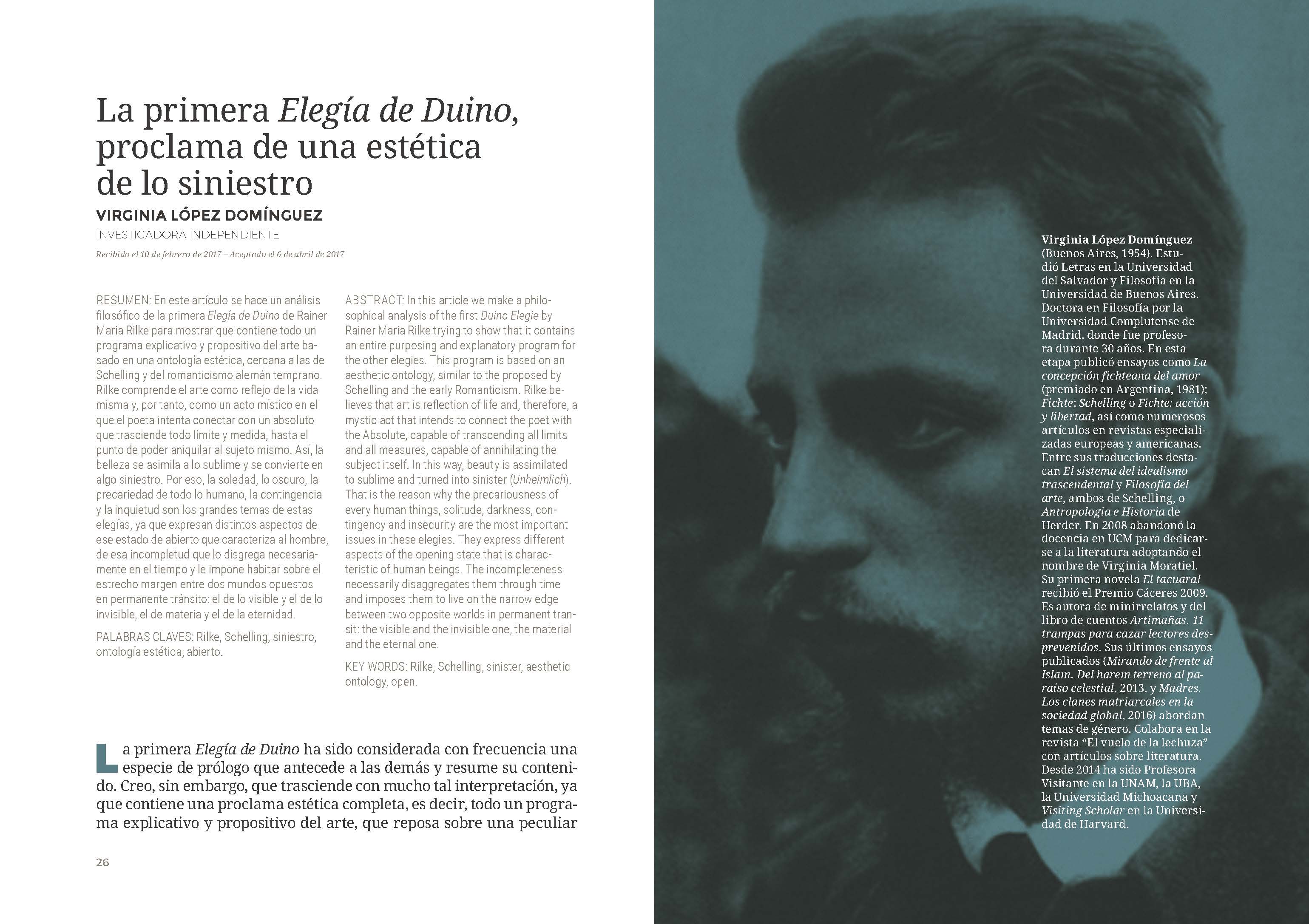The first Duino Elegy, proclamation of an aesthetic of the sinister
Keywords:
Rilke, Schelling, sinister, aesthetic ontology, openAbstract
In this article we make a philosophical analysis of the first Duino Elegie by Rainer Maria Rilke trying to show that it contains an entire purposing and explanatory program for the other elegies. This program is based on an aesthetic ontology, similar to the proposed by Schelling and the early Romanticism. Rilke believes that art is reflection of life and, therefore, a mystic act that intends to connect the poet with the Absolute, capable of transcending all limits and all measures, capable of annihilating the subject itself. In this way, beauty is assimilated to sublime and turned into sinister (Unheimlich). That is the reason why the precariousness of every human things, solitude, darkness, contingency and insecurity are the most important issues in these elegies. They express different aspects of the opening state that is characteristic of human beings. The incompleteness necessarily disaggregates them through time and imposes them to live on the narrow edge between two opposite worlds in permanent transit: the visible and the invisible one, the material and the eternal one.
Downloads

Downloads
Published
How to Cite
Issue
Section
License
Copyright (c) 2017 Virginia López Domínguez

This work is licensed under a Creative Commons Attribution-NonCommercial-ShareAlike 4.0 International License.




